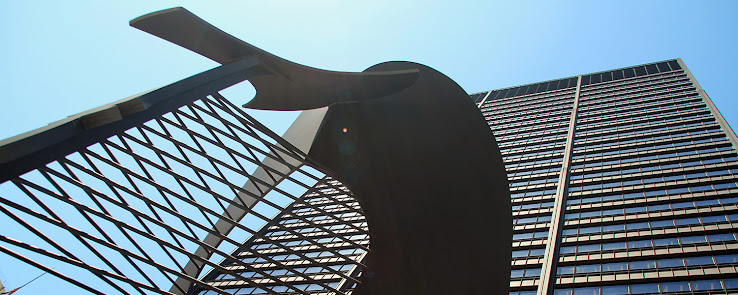I have been very vocal about my fondness for classical sculptures, mostly figural with elaborate details [and includes modern sculptures rendered in classical styles].. But lately the topic that has piqued my interest has been... How did we transition from classical figural sculptures to modern, abstract, surreal, non-figural and minimal sculptures?? Modernism in sculptures, is a themes I would like to explore.. and would require a lot of reading and learning, but hopefully, worth the time..
As anyone who visits this blog would know that it's written more in the spirit of learn-as-you-go.. Many times I update my previous posts as I gather more information.. And I'm sure this topic would also need a lot of updating as times goes by..
The topic of modernism and abstraction in Public Art,
can be broached from multiple perspectives..
And one of them, is the period after the War [1945]..
And it's a very sombre beginning..
With the end of War, there was a need to commemorate the human sacrifice, though public art. The death, the destruction, the Holocaust, the nuclear age, the bleak vision, the anxiety, and above all, the spirit of endurance.. This atmosphere was unprecedented in the past and it created an environment for acceptance of novel forms of public expressions.. The memorials were no longer necessarily of heroic figures.. Memorials for Victims of Concentration Camp or for Unknown Political Prisoners found new expressions in Abstract forms.. The audience for avant-garde sculptures increased from tiny esoteric groups to much wider masses of people..
Take some sculptures from this period..
- Large Tragic Head [1942] By Jean Fautrier.. [click here] suggests brutal violence in wartime Paris..
- Storm Man [1948] by Germaine Richer.. [click here] An image of survival: a battered, featureless head and pock-marked body..
- Concentration Camp Victims [1946-47] - By Mari Andriessen
- The Destroyed City [1947] - By Ossip Zadkine..
Although the trend towards avant-garde sculptures started earlier, with Dadaism, Surrealism and Cubism.. However after the War, there was a greater public acceptance for abstract sculptures..
Some names associated with abstract sculptures, that I wish to highlight in the coming days would be of.. Henry Moore, David Smith, Alexander Calder, Herbert Ferber, Isamu Noguchi, Louise Bourgeois, Louis Nevelson, Claes Oldenburg, Sol Lewitt, Mark Di Suvero, Richard Serra.. maybe few more.. Chicagoans should be proud that the work of all these masters can be found at public places..
To continue..

No comments:
Post a Comment